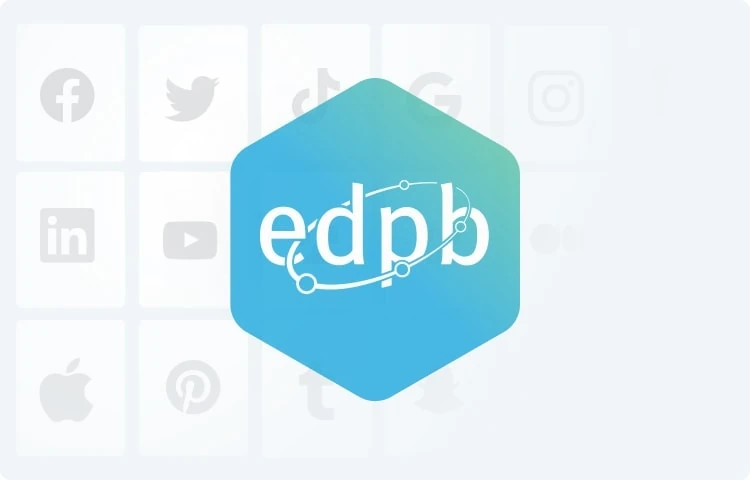First of all, let’s look into various types of risks posed to social media users in the context of targeting.
Risks to social media users:
The EDPB points out that risks to social media users can be of the following four types:
- Risk of data being used beyond the reasonable expectations of users and its intended purposes.
- The possibility of discrimination and exclusion against certain individuals.
- The possibility of manipulation of users so as to undermine individual autonomy and freedom.
- The potential adverse impacts to vulnerable categories of users such as children.
Targeting Mechanisms:
Now, let’s look into three different targeting mechanisms explained by the EDPB.
- Targeting on the basis of provided data:
Provided data refers to information actively provided by the social media user to the social media provider and/or the targeter. Social media users actively disclose information about themselves when opening a social media account or profile. Such information may include name, date of birth, gender, place of residence, language, relationship status, interests, and even current employment. This information is then used by the social media provider to develop parameters or criteria, which enable the targeter to address specific messages to the specific set of social media users. Targeter can be any natural or legal person that can direct specific messages to a set of social media users on the basis of specific parameters or criteria. List-based targeting is one example where a targeter uploads pre-existing lists of personal data (such as email addresses or phone numbers) for the social media provider to match against the information on the platform.
As joint controllers, both the social media provider and the targeter must be able to demonstrate the existence of a legal basis to justify the processing of personal data. The two legal bases which could justify the processing that supports the targeting of social media users are the data subject’s consent and legitimate interests of the controller.
- Targeting on the basis of observed data:
Observed data refers to data provided by the social media user by using a service or device. Social media providers may be able to observe the behaviour of social media users via pixel-based targeting, geo-targeting, and similar techniques. Pixel-based targeting, for example, occurs when an online retailer places a tracking pixel on its website so it can retarget social media visitors who have not made a purchase. Geotargeting, on the other hand, occurs when a social media network collects the GPS (location) from its users on an ongoing basis which the social media network uses to help advertisers better target advertising.
Since such targeting normally involves the use of cookies, data controllers must obtain users’ consent. The EDPB reminds organizations of their obligation under Article 5(3) of the ePrivacy Directive that requires users to provide clear and comprehensive information about the purposes of the processing prior to obtaining users’ consent. Such consent needs to be freely given, specific, informed and unambiguous. The EDPB emphasizes that both the website operator for the transmission of personal data triggered by its website and the social media provider should obtain consent as they both act as joint controllers as far as targeting on the basis of observed data is concerned.
- Targeting on the basis of inferred data:
Inferred data (derived data) is the data created by the data controller on the basis of the data provided by the social media user, regardless of whether these data were observed or actively provided by the user, or a combination thereof. Inferences about social media users can be made both by the social media provider and the targeter.
The targeting of social media users on the basis of inferred data typically involves profiling - automated processing of personal data which aims at evaluating personal aspects, in particular, to analyse or make predictions about individuals. Where the profiling is likely to have a similarly significant effect on a user, Article 22 of the GDPR will be applicable. Accordingly, data controllers will have to ensure the following:
- Case-by-case assessment as to whether targeting will similarly significantly affect social media users in each instance concerning the specific facts of the targeting.
- Principles of fairness, necessity, proportionality and data quality.
- Explicit consent of the user in the case of the use of tracking techniques or targeting of vulnerable categories of persons having the potential to significantly and adversely affect them.
Data Protection Principles:
Now, let’s look into data protection principles emphasized by the EDPB in its Guidelines, that are relevant in the context of targeting:
- Transparency:
The EDPB recalls that the mere use of the word “advertising” would not be enough to inform the users that their activity is being monitored for targeted advertising. In fact, it should be made clear to users what types of processing activities are carried out and what this means in practice.
- Data subjects’ right to access:
As joint controllers, the social media provider and targeter can designate a single point of contact for users to exercise their rights. However, this will not exclude the possibility for users to exercise their rights against each data controller.
- Data protection impact assessments:
A DPIA is necessary if targeting is likely to result in a high risk to users. If a DPIA is necessary, the joint arrangement/agreement between the social media provider and targeter should address the question of how the controllers should carry it.
- Special categories of data:
The processing of special categories of data can take place only if it meets one of the conditions set out in Article 9(2) of the GDPR, such as having obtained the user’s explicit consent or the data have been manifestly made public by the social media user.
Takeaways:
To summarize, here are the key takeaways of EDPB’s Guidelines on targeting of social media users:
- Targeting of social media users presents many risks to users and such targeting can be via provided data, observed data and inferred data. There are various scenarios and techniques through which targeting of social media users is done.
- Targeters and social media providers act as joint controllers where they both determine the means and purposes of data collection. This happens when a social media service provider or targeter identifies the audience to be targeted, sets the targeting criteria, and shows advertisements to the targeted audience.
- As joint controllers, targeters and social media providers must determine their respective data processing operations via joint agreement. The agreement must cover details of all processing operations for which both parties are jointly responsible.
- Both joint controllers must have a legal basis to process personal data. For most targeting of social media users, the likely legal bases to apply are data subjects’ consent and the legitimate interests of the controller or a third-party.
- For consent to be valid, it must be freely given, specific, informed, and unambiguous. Moreover, social media users should be allowed to withdraw their consent at any time without any detriment.
- To rely on legitimate interest as a legal basis to process personal data, three cumulative conditions must be met:<
- Necessity test: the pursuit of a legitimate interest by the data controller or by the third party to whom the data are disclosed,
- Purpose test: the need to process personal data for the legitimate interests pursued, and
- Balancing test: the legitimate interest of the controller or third-party must be balanced against the fundamental rights and freedoms of the data subject.
- In addition to having a legal basis for data processing, controllers must comply with data protection principles, in particular the principles of transparency, necessity, proportionality, and data quality. Moreover, they must adequately respond to data subject’s access requests.
Businesses are now required to assess their roles as social media providers or targeters and determine their respective data protection obligations via joint agreement. They must ensure the processing of personal data only on lawful grounds. As pointed out by the EDPB, those legal bases may be the data subject’s consent or legitimate interests of the data controller or third-party.
Securiti offers automated data mapping, DSR rights fulfillment, and consent management to help you comply with the applicable legal requirements. Ask for a DEMO today to understand how Securiti can help you comply with GDPR, EDPB Guidelines, and global data privacy laws and regulations with ease.












